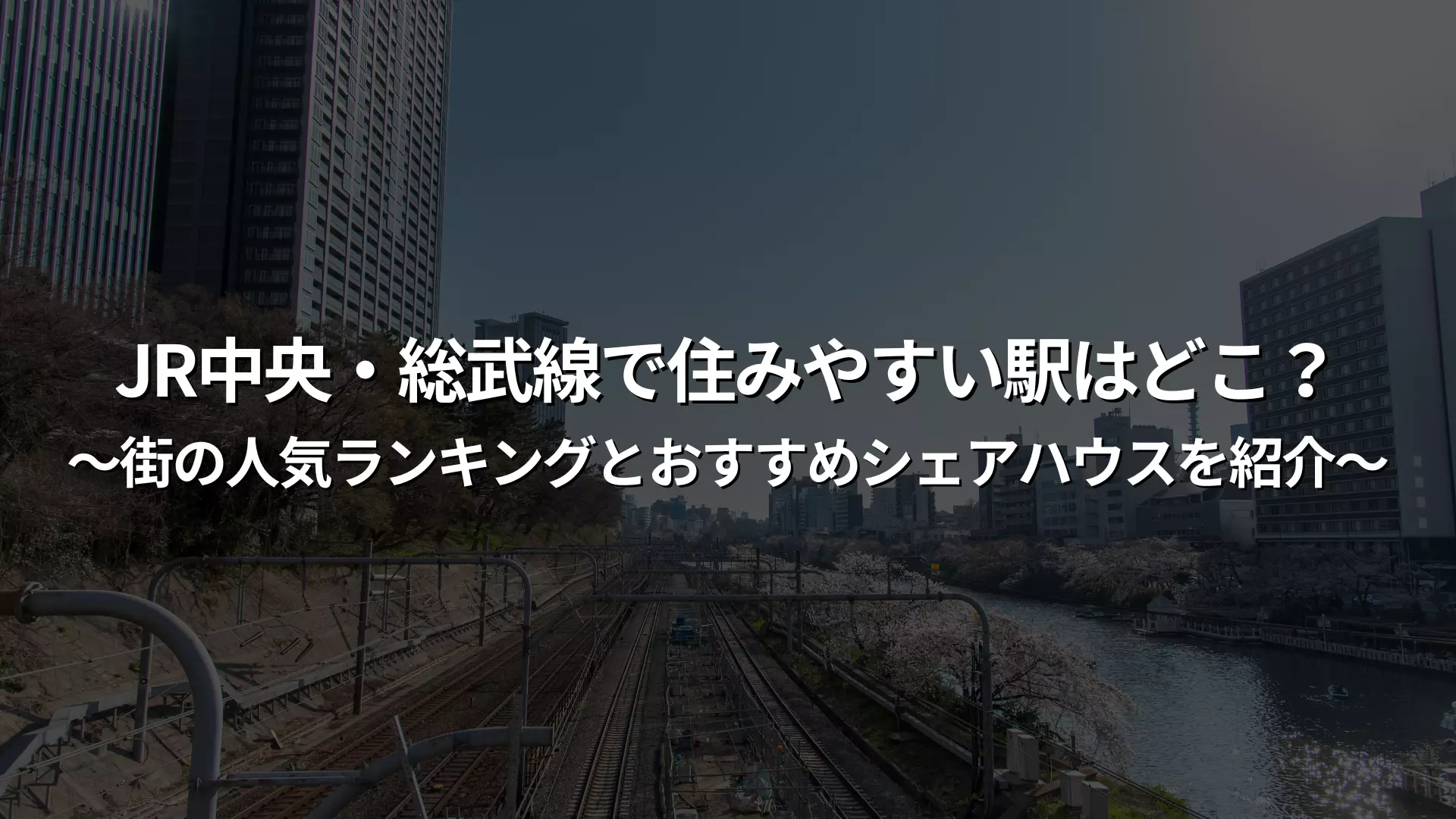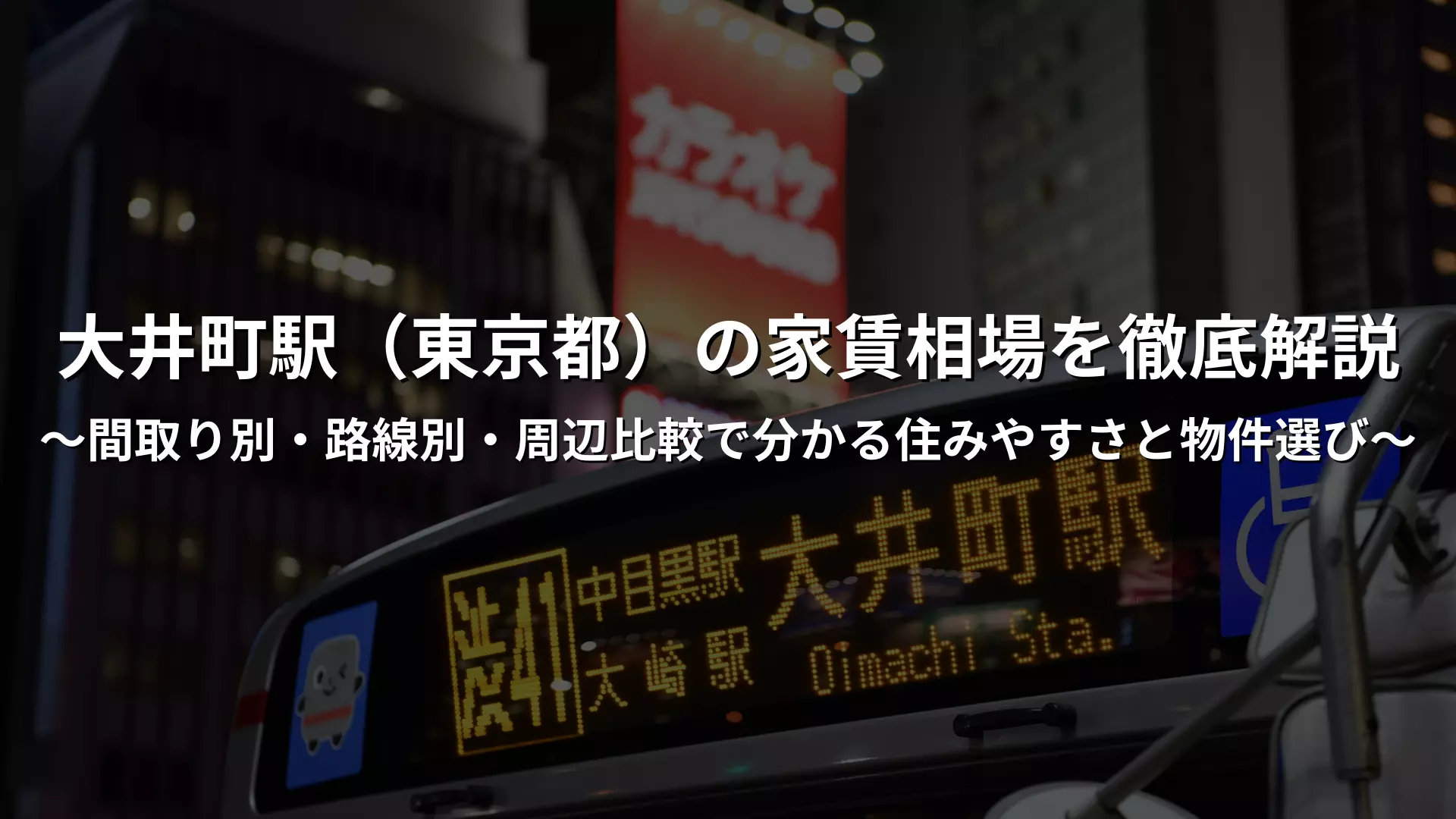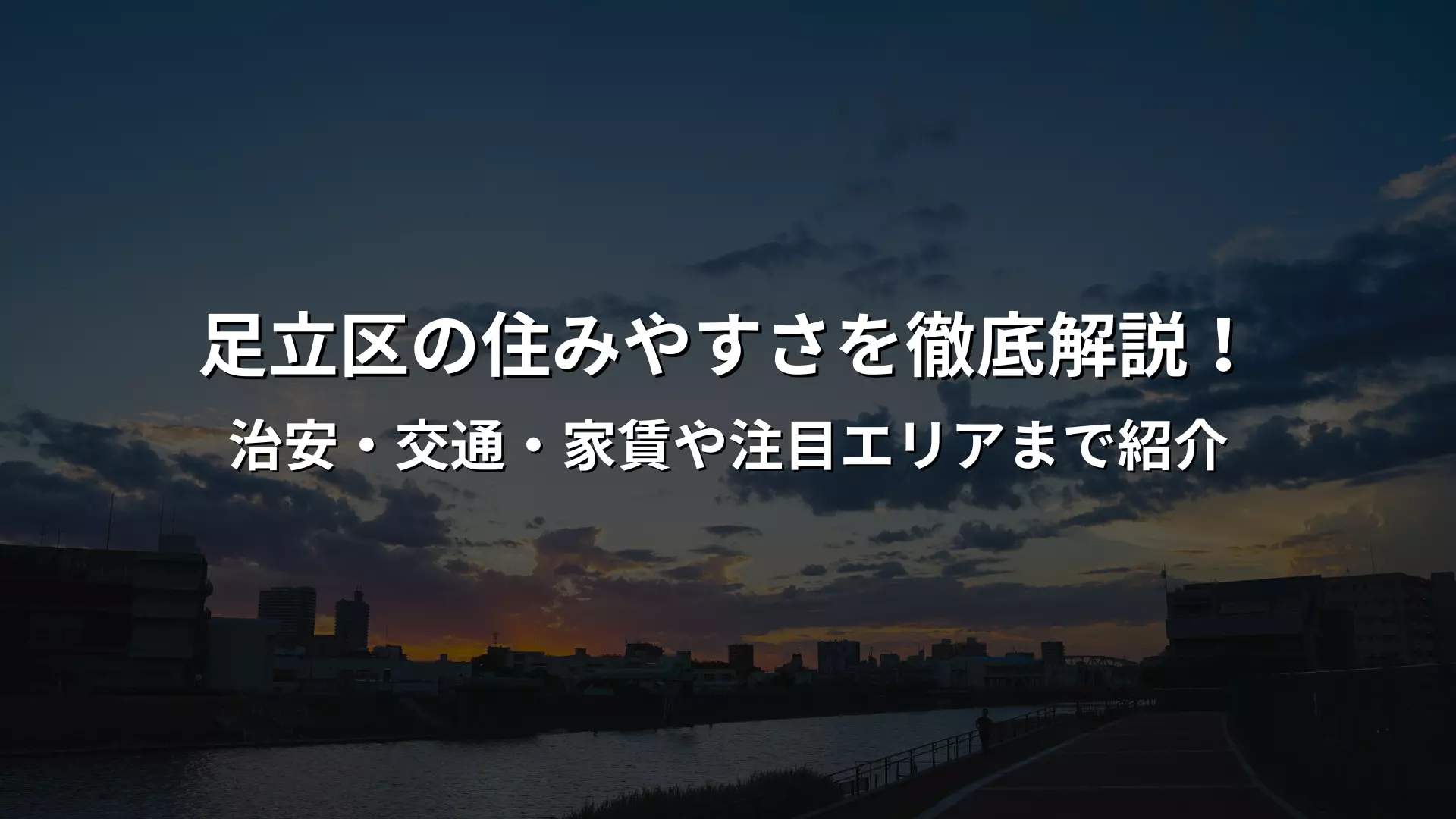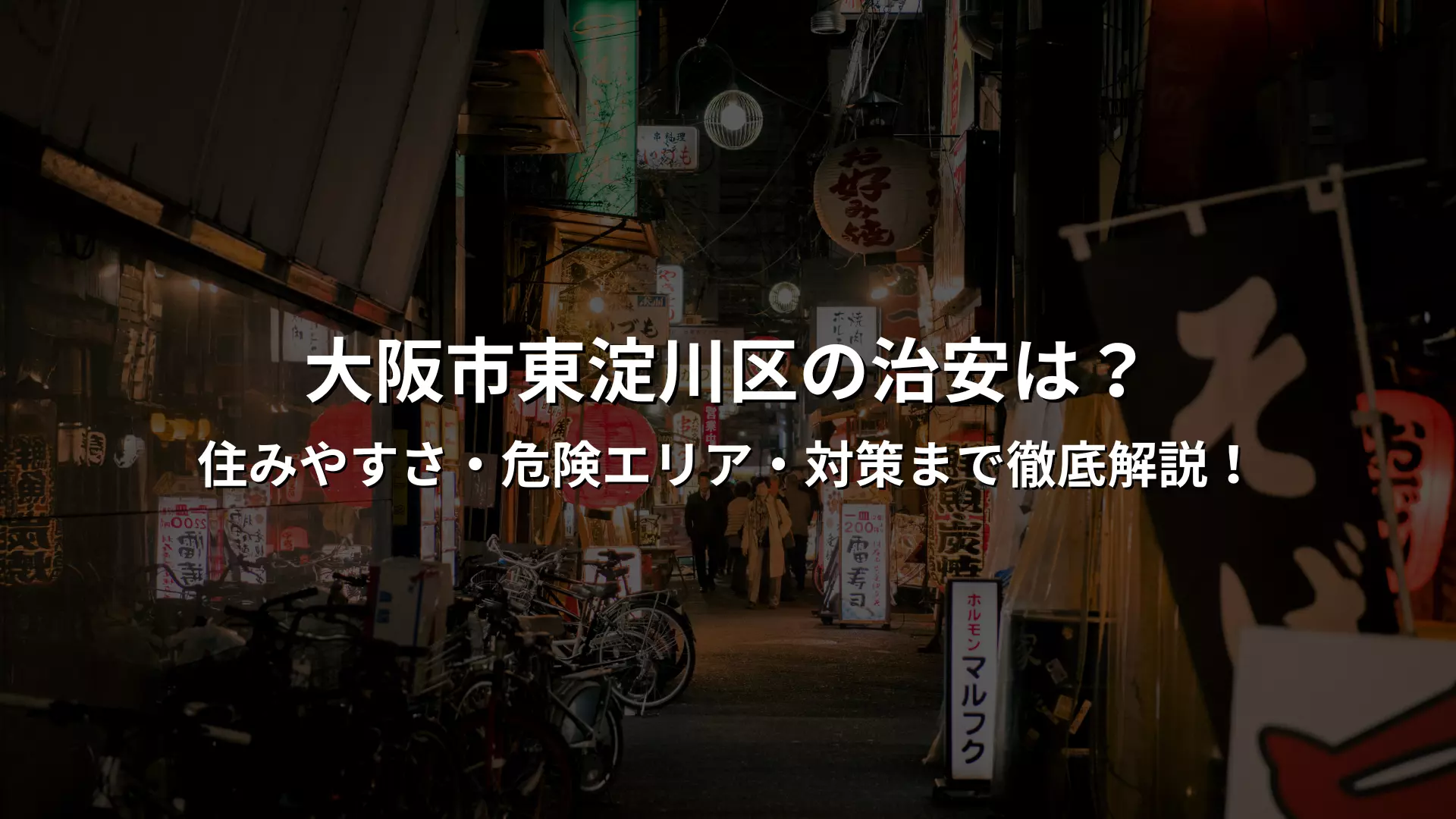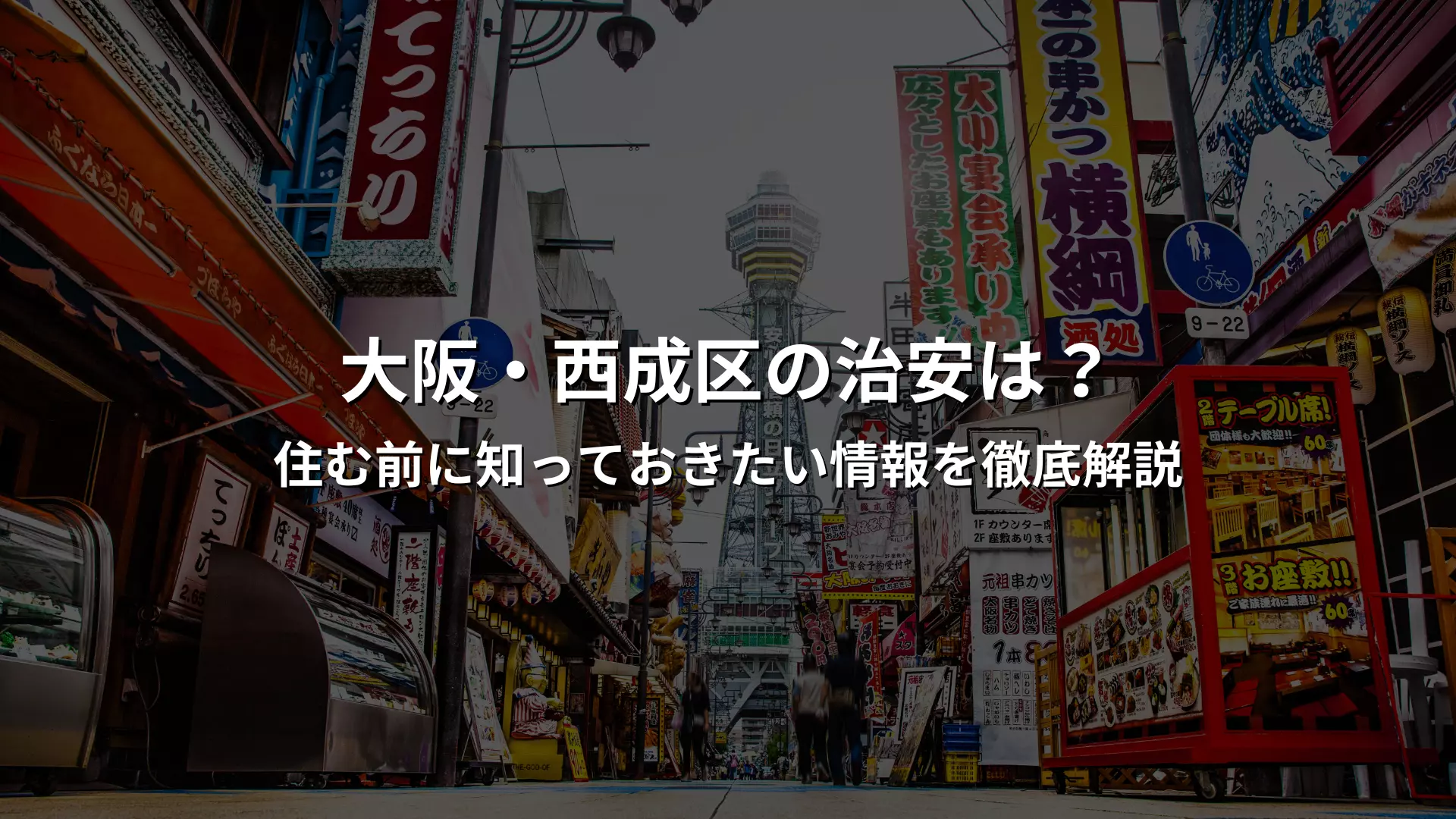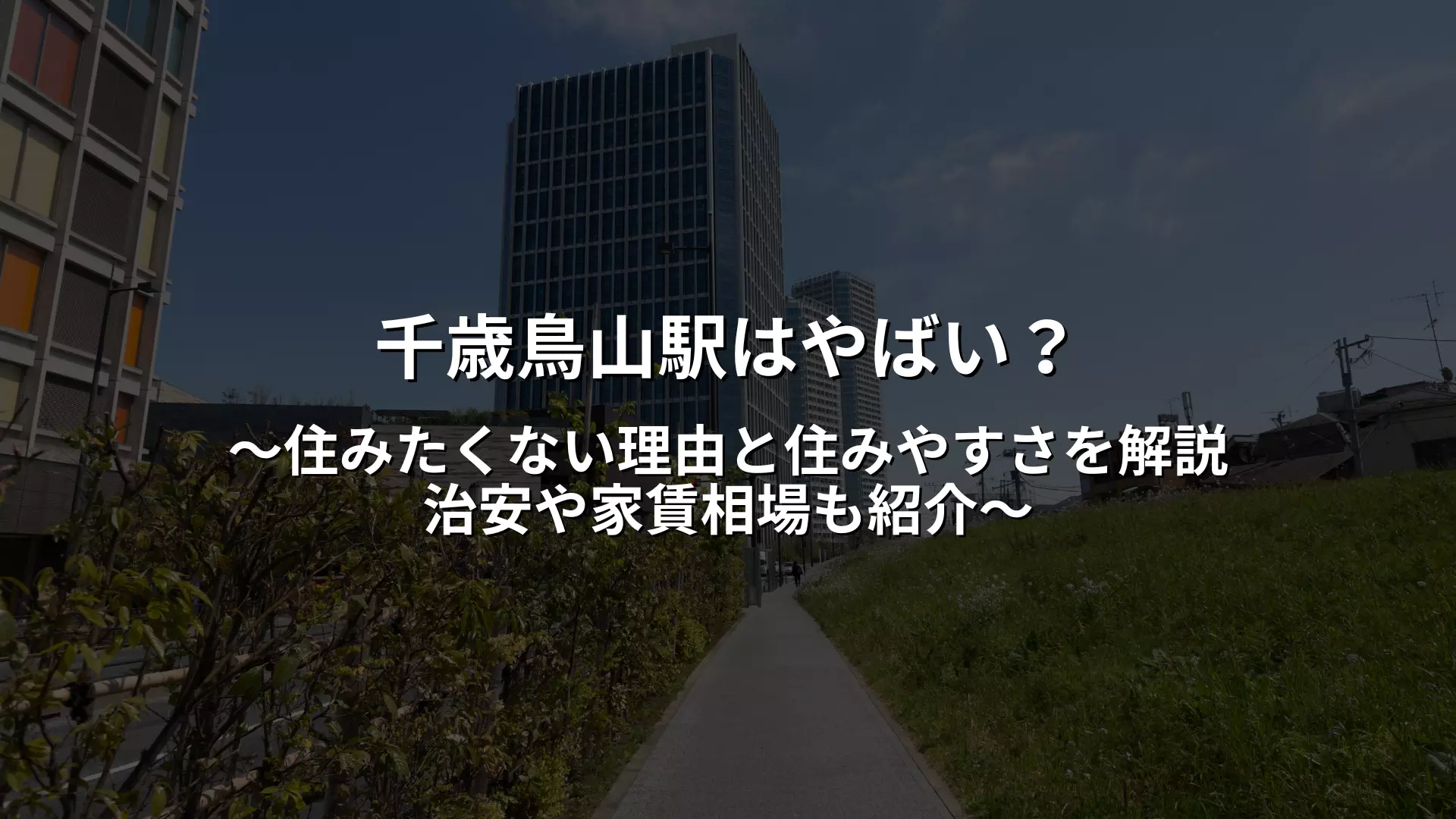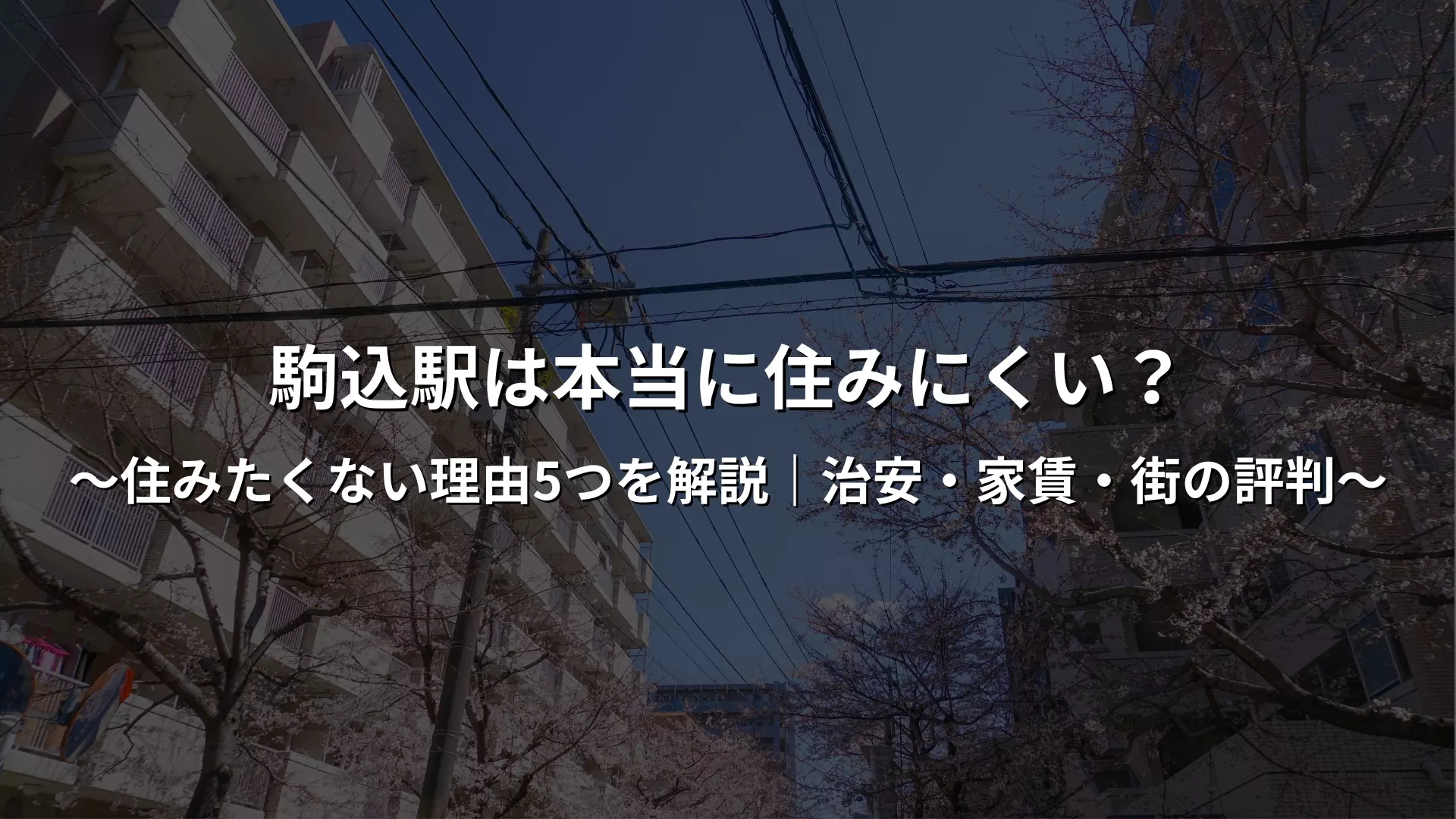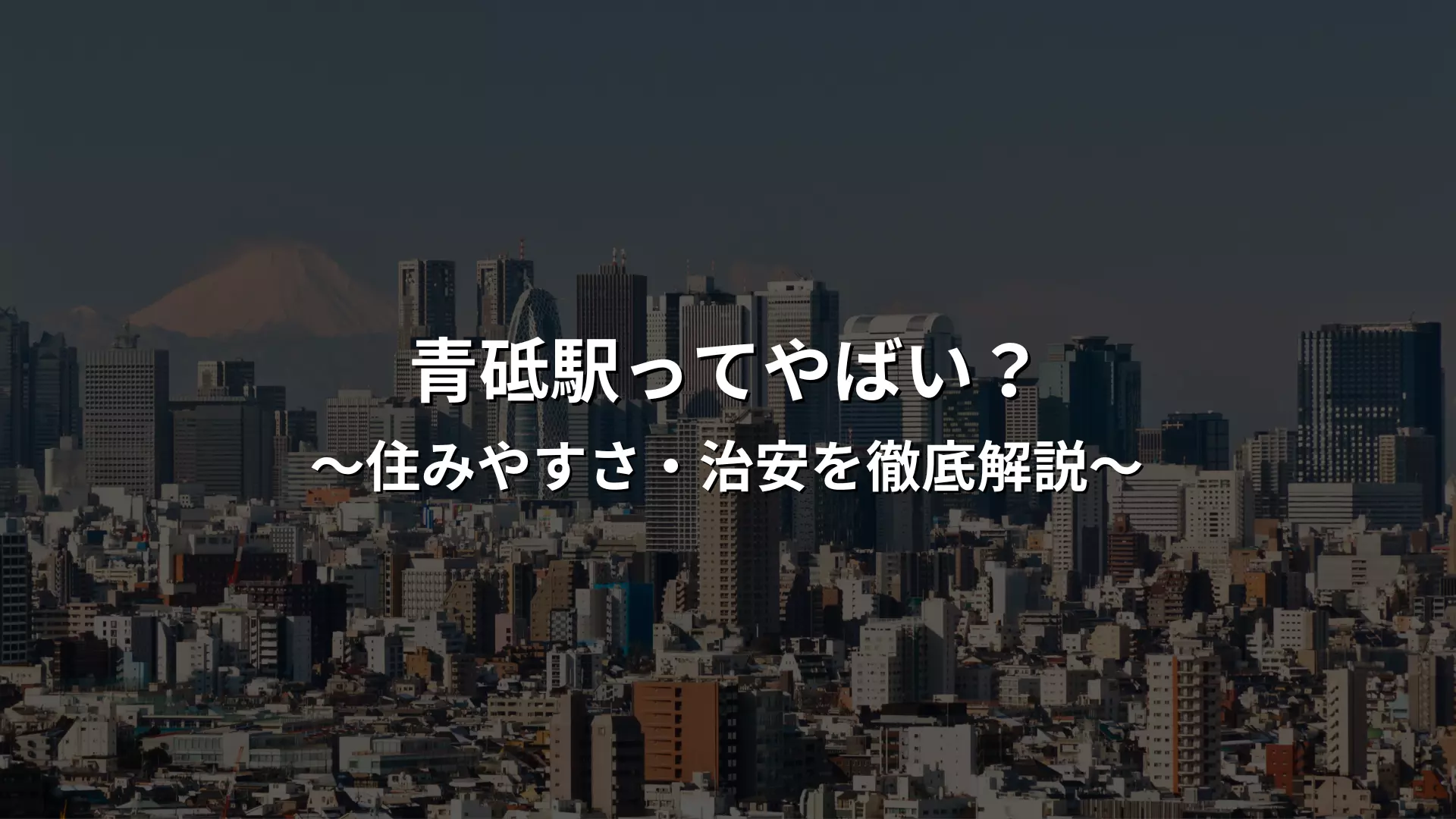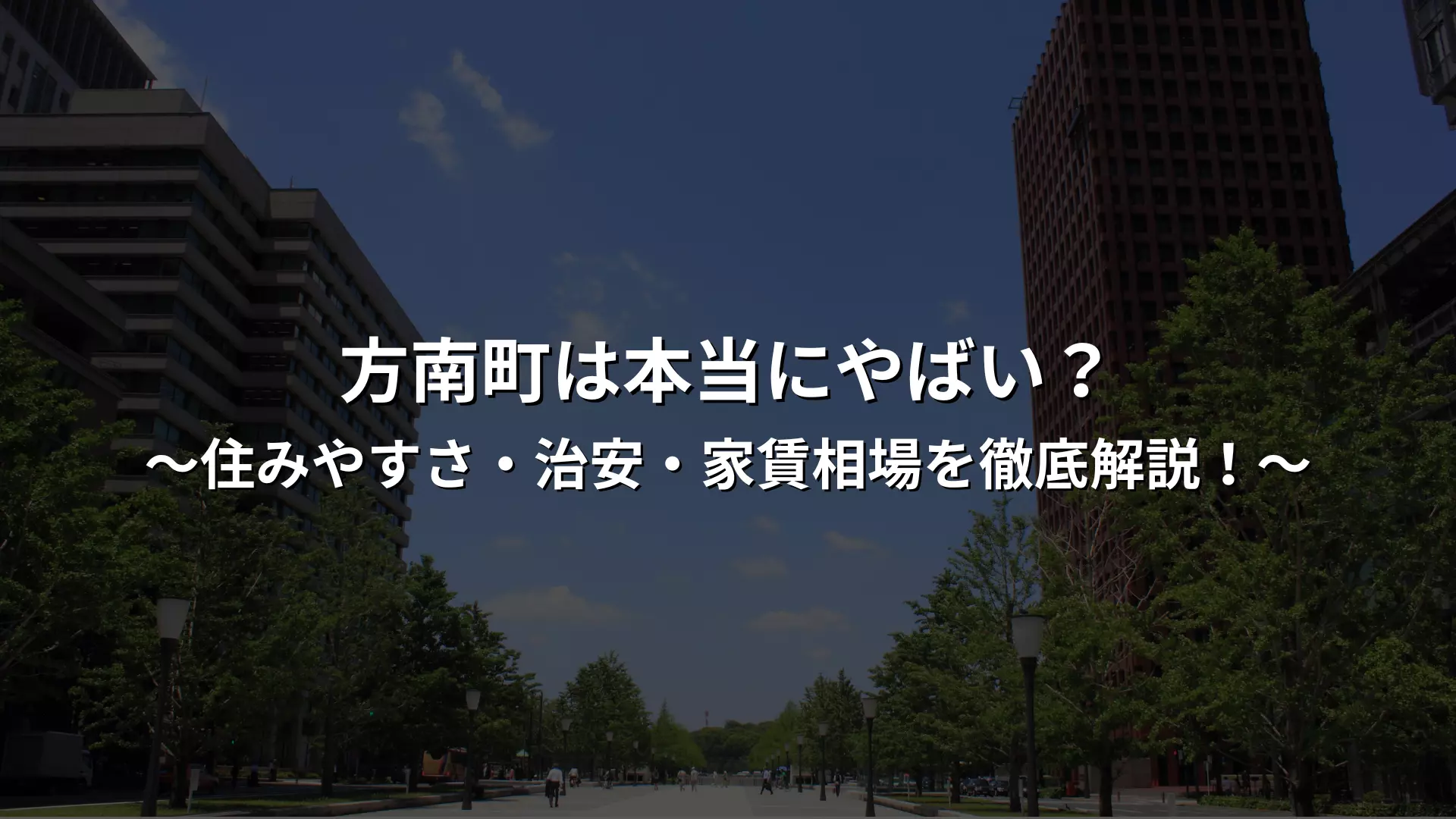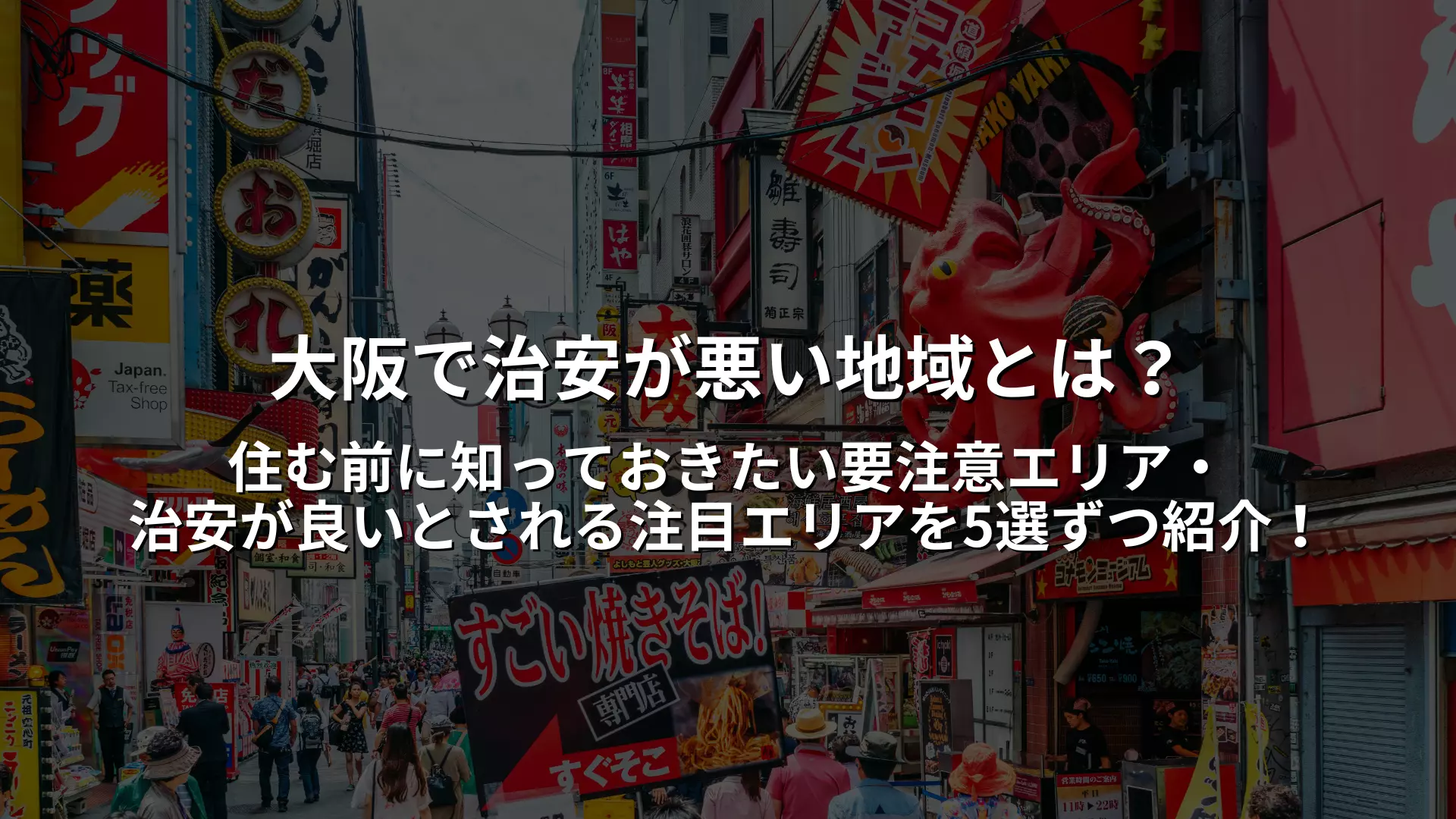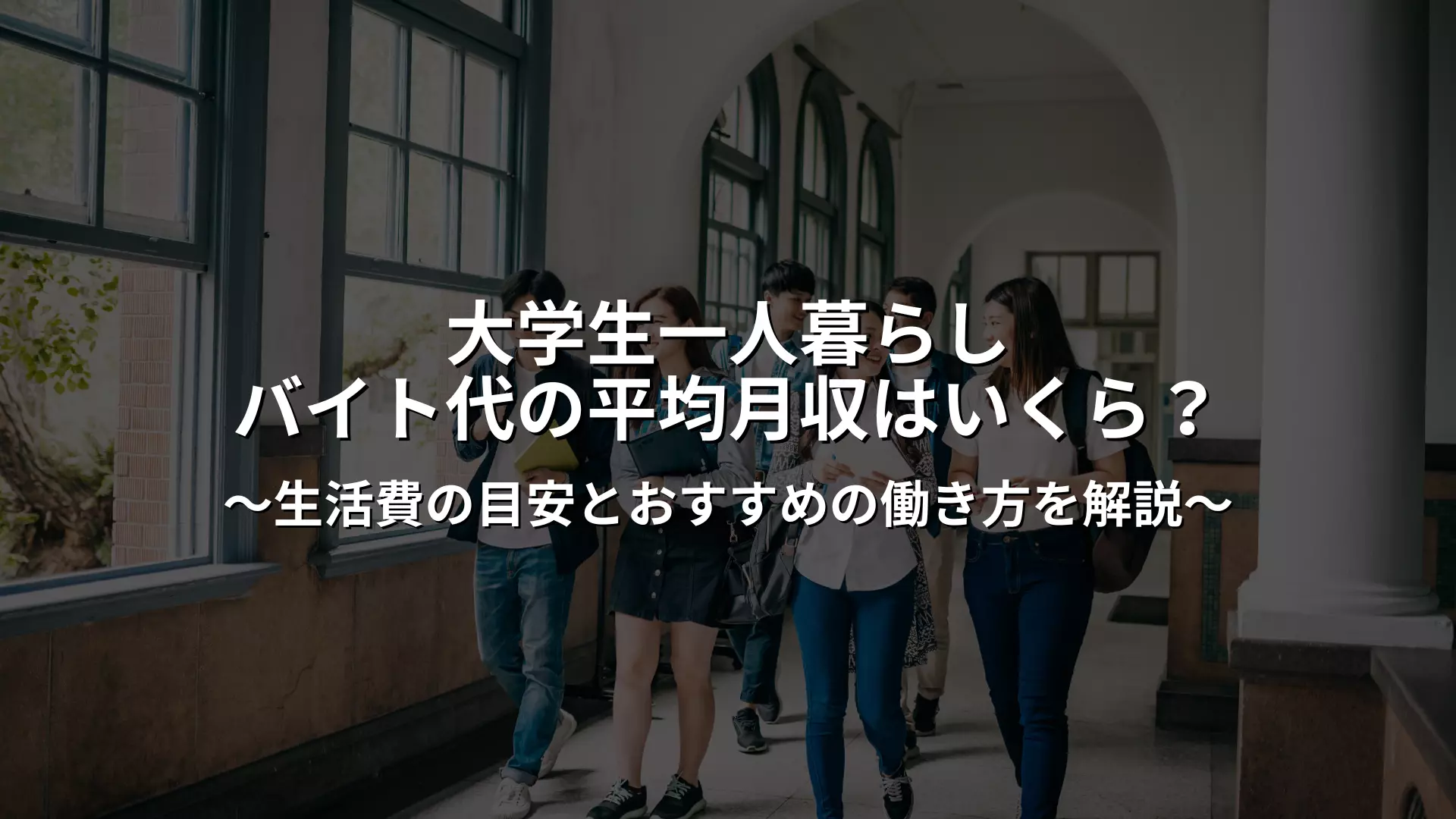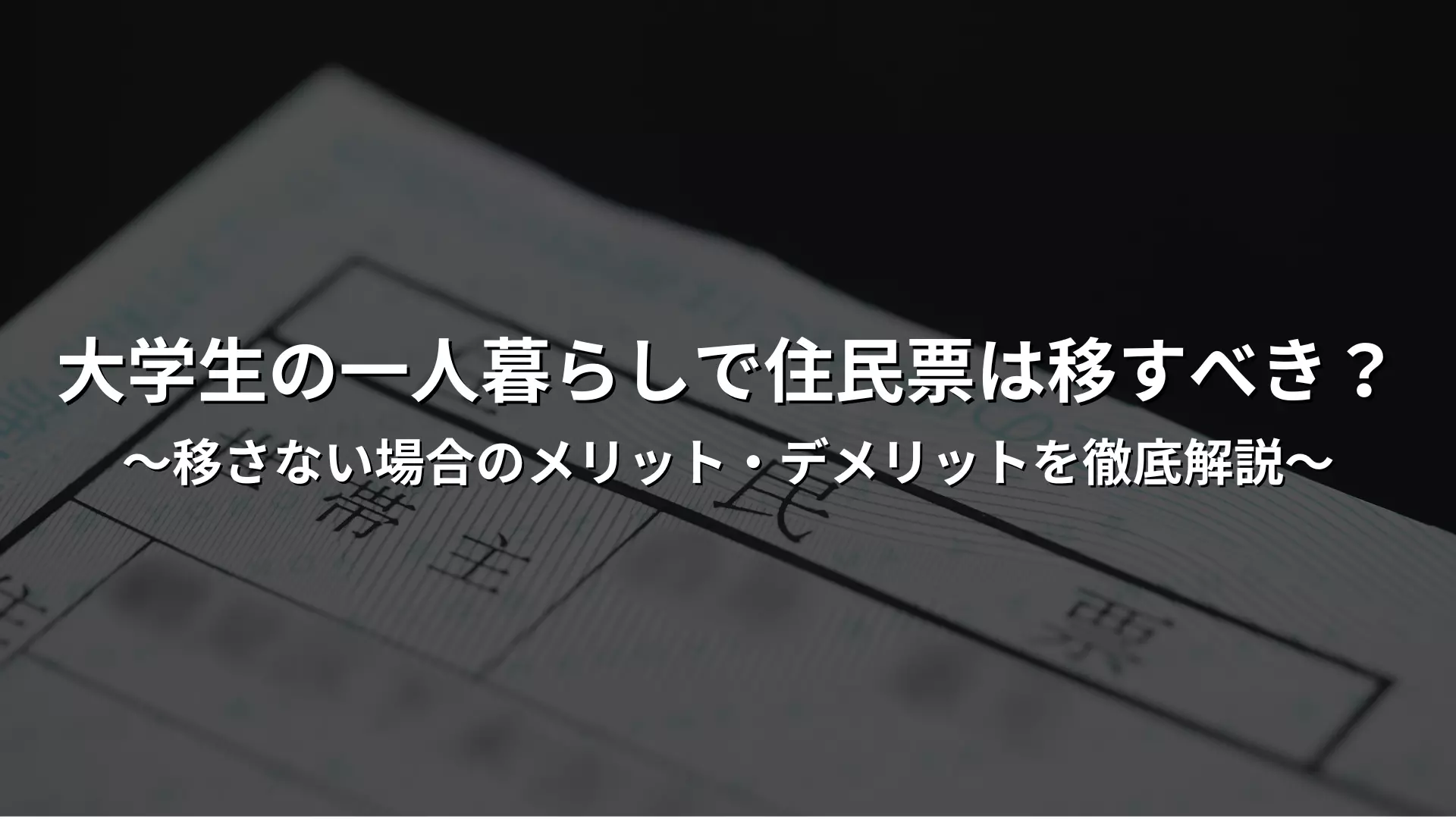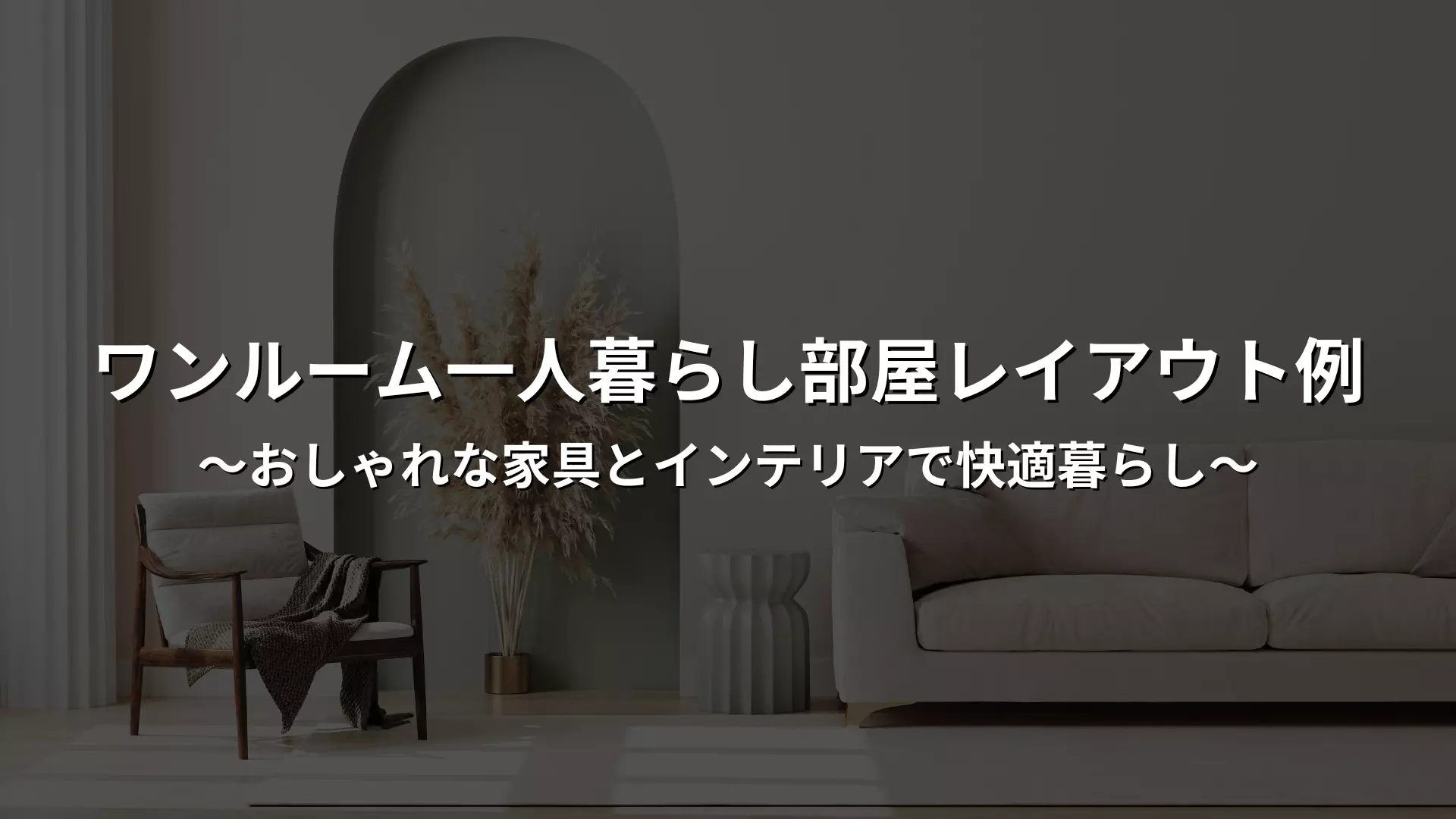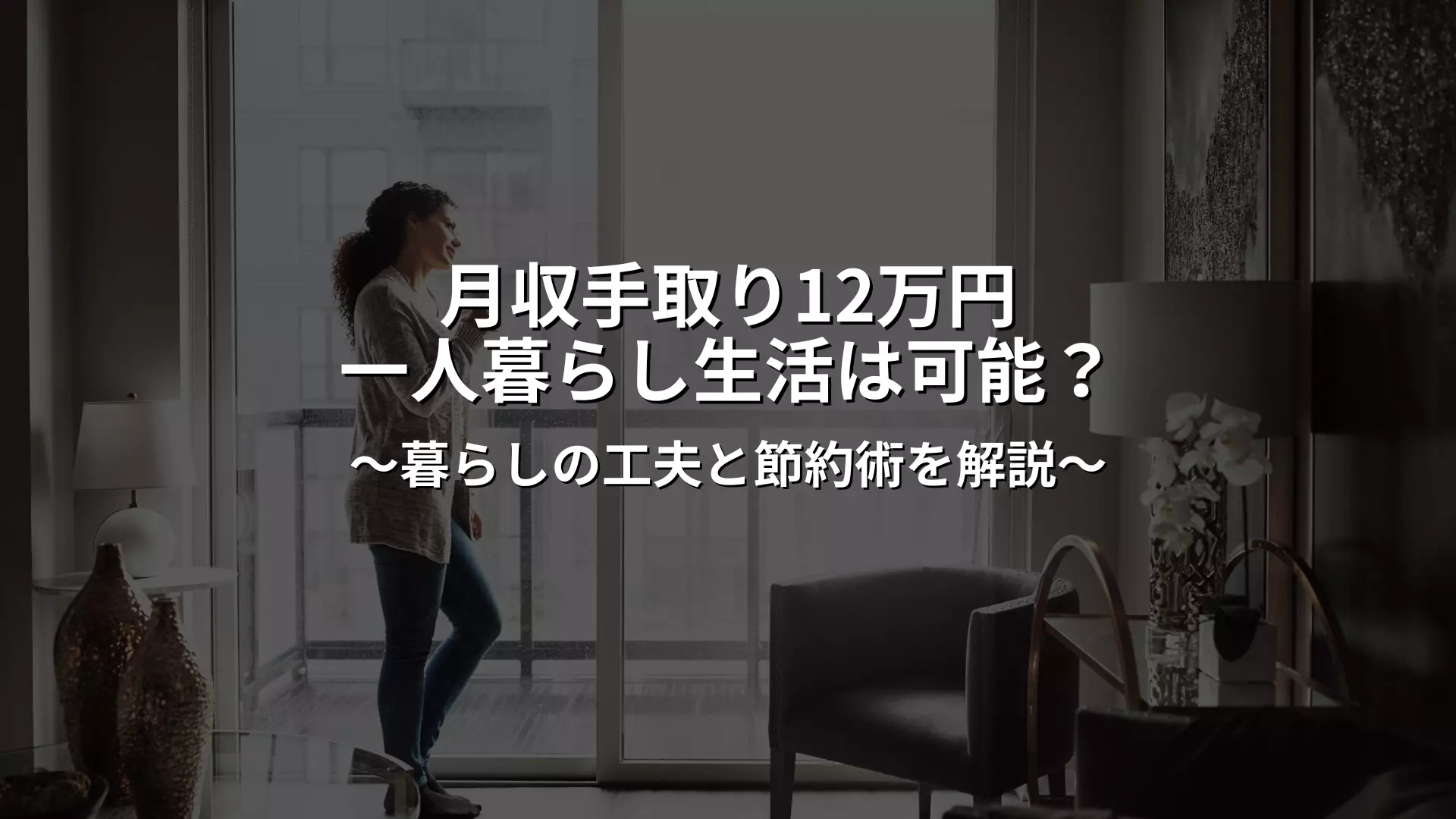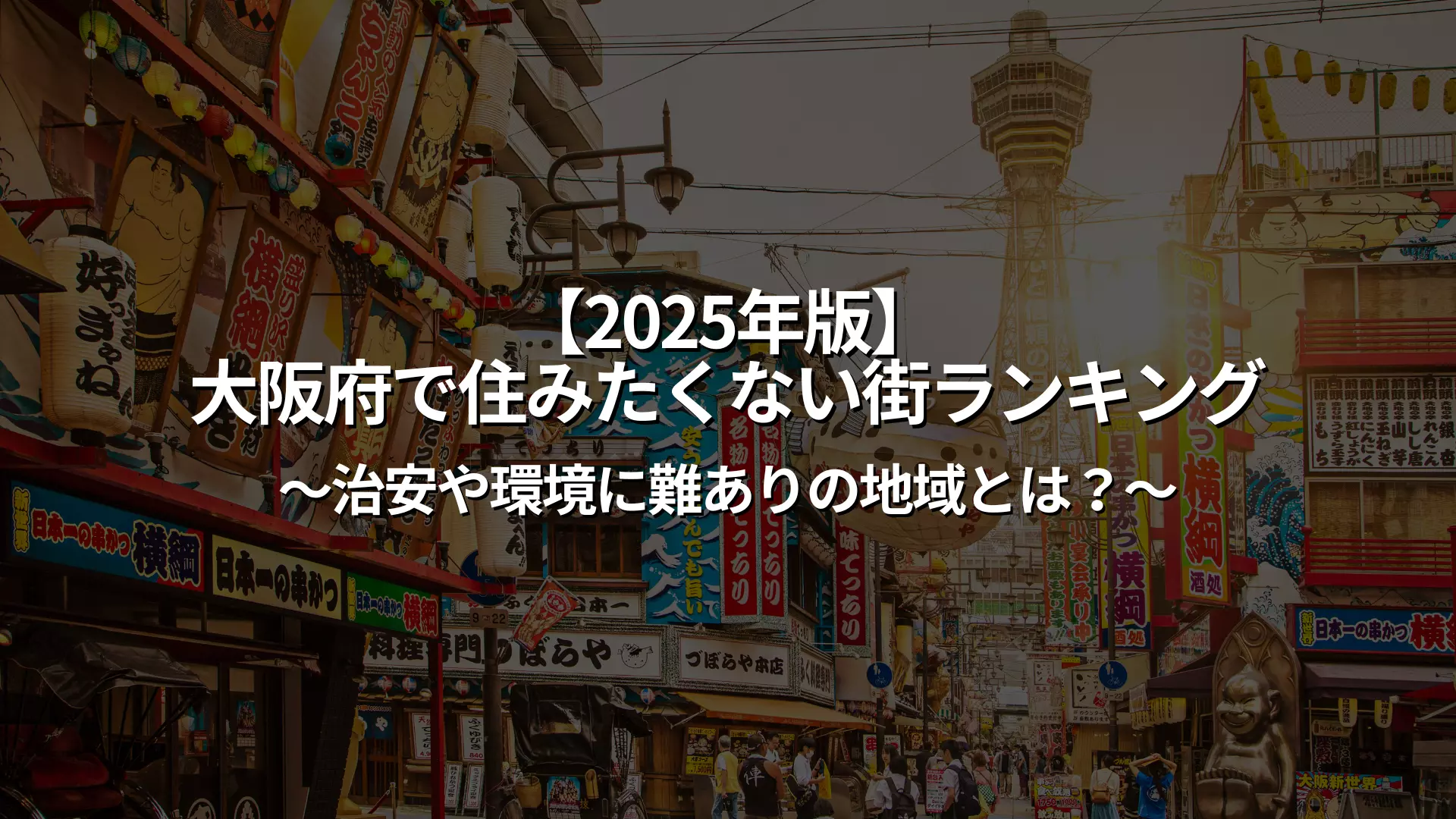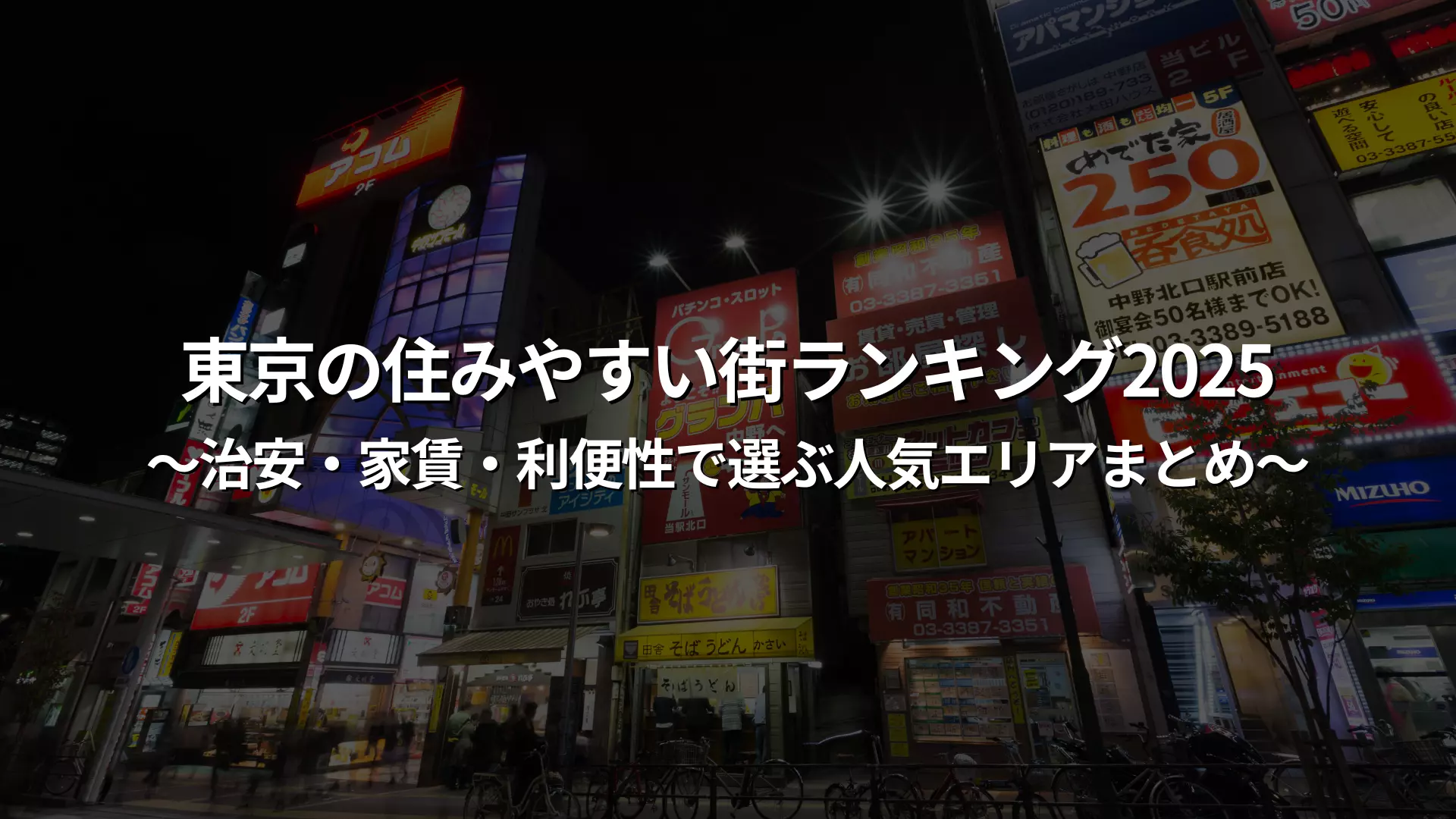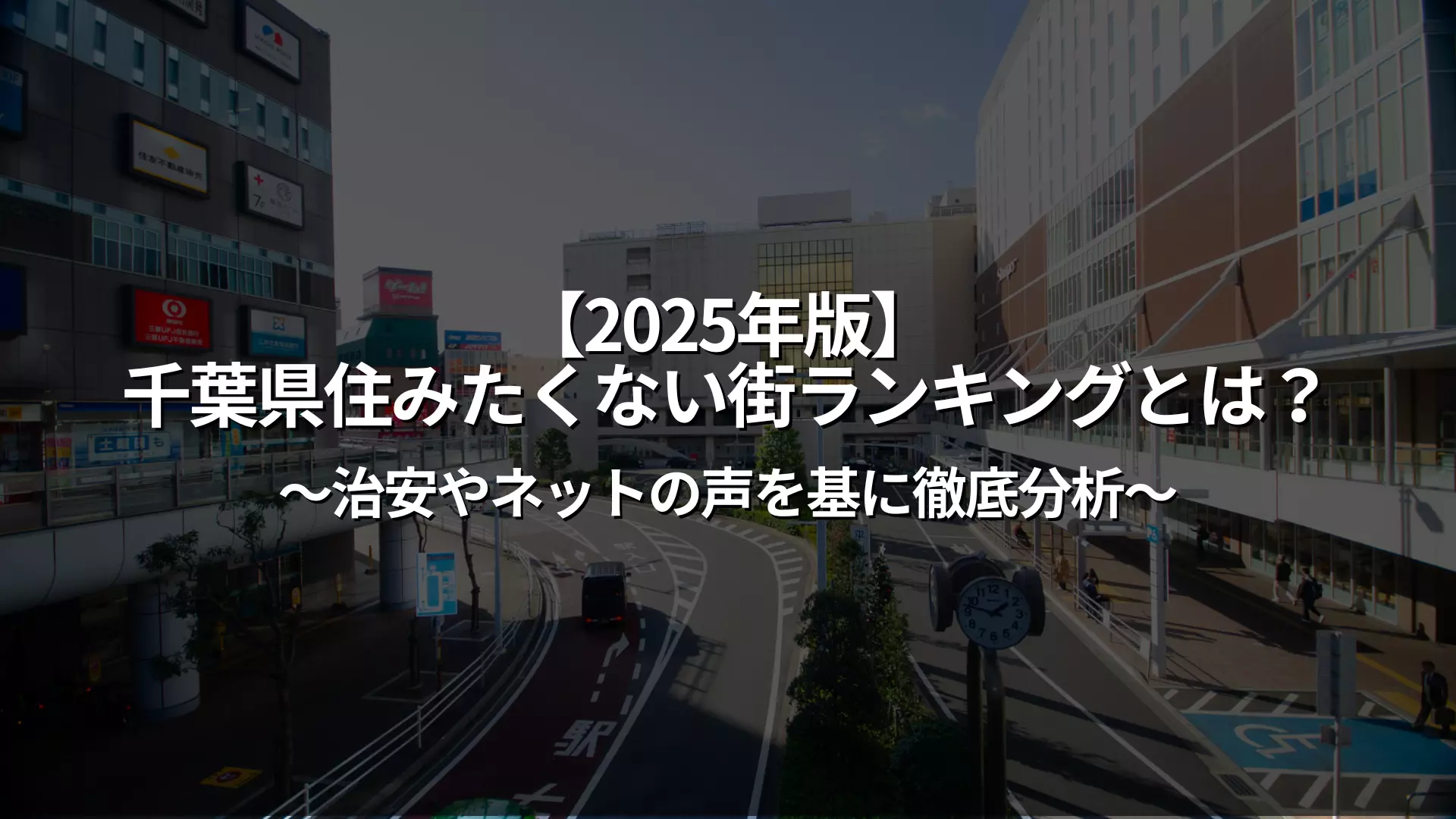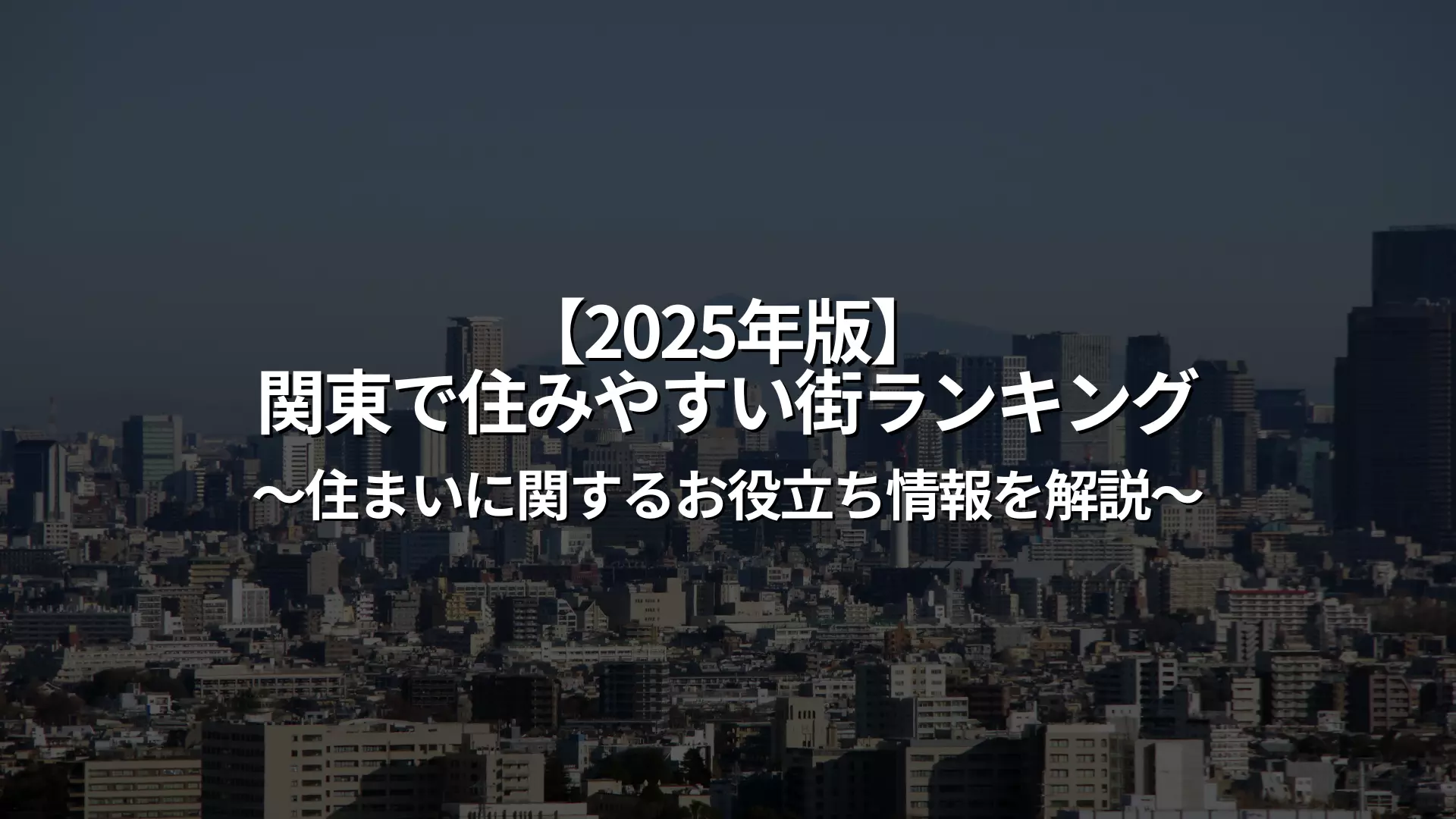Basic information on the Chuo and Sobu lines
The Chuo-Sobu Line is a major JR line connecting central Tokyo with Chiba, and is an essential part of daily commuting to work or school.
It crosses from Mitaka Station to Chiba Station from east to west, passing through major areas in the city center such as Ochanomizu, Suidobashi, and Akihabara. The Chuo and Sobu lines, which only run to every station, connect with many lines such as the Yamanote Line, the Sobu Rapid Line, and Tokyo Metro, making it an area with excellent accessibility. There are many universities, office buildings, and commercial facilities around the stations, making it a well-balanced area for living and working.
Each line has a different atmosphere, so you can choose a town that suits your lifestyle.
Detailed explanation of Chuo and Sobu Line route information
The Chuo-Sobu Line local trains run along a 40km route connecting Mitaka Station and Chiba Station, with trains running approximately every 3 to 5 minutes during the day.
In particular, trains arrive every 3 to 4 minutes at Mitaka Station and every 5 minutes at Chiba Station, making it extremely convenient.
- First departure times: 4:35 from Mitaka Station and 4:30 from Chiba Station, making it possible to travel early in the morning.
- Last train times: The trains run relatively late, at 0:34 from Mitaka Station and 0:30 from Chiba Station, making it easy to get home after work or a night out.
- Rush hour: The trains are highly crowded, so be prepared for heavy traffic during rush hour when people are commuting towards the city centre.
When taking into account the connections along the line and the number of trains running, it can be said that this is a line that stands out for its excellent transportation convenience.
*For weekday schedules
Characteristics of the Chuo and Sobu Lines
The Chuo-Sobu Line is a 40km long line that connects Mitaka in western Tokyo to Chiba Station, and is used by many commuters every day. Its appeal lies in its ease of access and the large number of livable areas. There are major stations along the line that are convenient for transfers, making it popular with people who work in the city center. Another feature is that each station has its own unique characteristics, making it easy to choose a city that suits your lifestyle.
Here, we will introduce the specific benefits of the Chuo-Sobu Line from three perspectives.
Highly convenient transfer points and excellent access to downtown Tokyo
The Chuo-Sobu Line runs east to west from Mitaka to Chiba, with terminal stations such as Shinjuku, Iidabashi, Ochanomizu, and Akihabara dotted along the line. These stations connect to multiple lines, including the Yamanote Line, Tokyo Metro lines, and the Sobu Rapid Line, making transfers extremely smooth.
It is characterized by its high convenience, allowing access to all areas of Tokyo. In addition, the fact that you can get to the city center from Chiba with a single train is a big attraction for those commuting to work or school. There are many universities and office districts along the line, making it a versatile line that is useful on weekdays and holidays. In addition, since multiple lines intersect, it is easy to secure detour routes in case of schedule disruptions, allowing for stable travel.
The Chuo and Sobu lines are a very reliable way to reduce the stress of traveling in your daily life, making them an ideal choice for those who value transportation convenience when choosing a place to live.
There are many livable towns along the Chuo and Sobu lines
There are many towns along the Chuo and Sobu lines that combine the convenience of the city center with the tranquility of a residential area. For example, Kameido and Koiwa are popular areas that retain the atmosphere of the old downtown area, lined with independent shops and locally-owned restaurants, making it a safe and secure place to live.
In addition, the rent tends to go down the further you get towards Chiba, so you have more options even if you have a limited budget. Shin-Koiwa and Funabashi are also easily accessible and are attracting attention as "easy-to-live" towns with excellent value for money. Furthermore, the Chuo and Sobu lines pass through several major stations, so commuting to work or school in the city is smooth no matter where you live.
This line caters to a wide range of needs, from families to single people and students. It has a good overall balance of public safety, convenience for daily life, and transportation access, and there are many reasons why it is chosen as a "Sobu Line station that is easy to live in."
The first train leaves early, making it convenient for early morning travel and late night return trips.
One of the great attractions of the Chuo and Sobu lines is that the first and last trains run very early and late.
Both Mitaka Station and Chiba Station start operating from around 4:30am, allowing for flexible travel even in the early morning. This allows you to leave early in the morning for work, long-distance travel, events, etc. The early departure of the first trains on the Chuo and Sobu lines is a major advantage, especially for those who work early in the morning or frequently use the airport.
In addition, the last train is scheduled to run until midnight, so you can use it with peace of mind even if you get home late due to overtime, drinking parties, leisure activities, etc. In today's world where lifestyles are diversifying, flexibility in travel times is extremely important.
With its flexible timetable and frequent service, the Chuo-Sobu Line is popular with many people as an easy-to-live-along area where people can live freely without being tied down by time.
Search from 6,636 rooms of 996 properties
Top 5 Places to Live Along the Chuo and Sobu Lines
Popular towns that are both easy to live in and convenient are dotted along the Chuo and Sobu lines. This line crosses Tokyo from east to west, passing through major terminal stations such as Shinjuku and Akihabara, making it an ideal location for many people to commute to work, school, and shopping.
In this chapter, we will introduce five of the most popular stations on the Chuo and Sobu lines, and explain their appeal in detail. If you are considering moving, please use this as a reference.
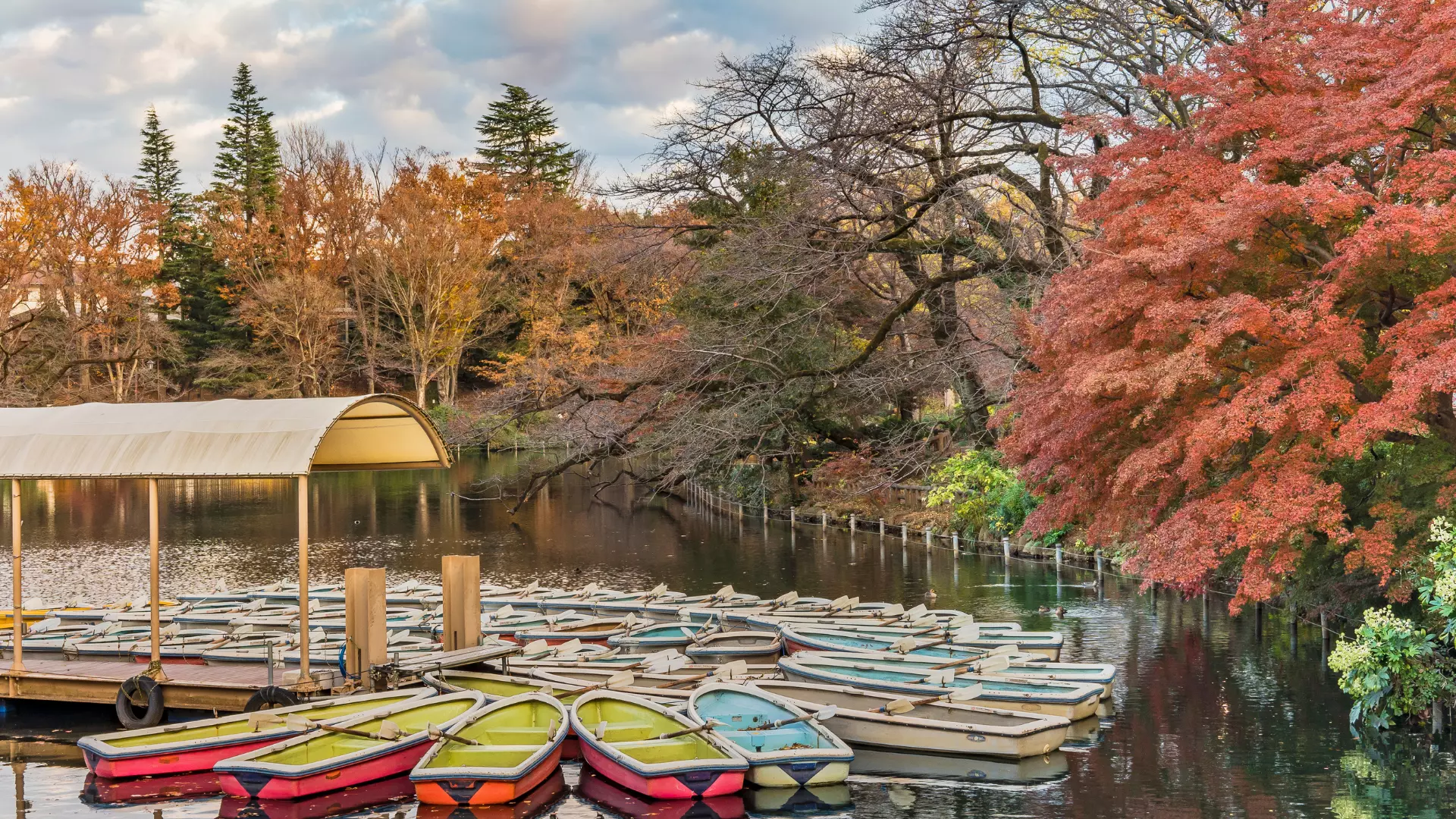
No. 1 Musashino City "Kichijoji"
Kichijoji, which boasts unwavering popularity along the Chuo and Sobu lines, is known as a regular on the rankings of cities people want to live in, and is an area that is widely supported by people of all ages, from young people to families.
The area around the station is lined with department stores, general stores, and cafes, creating a trendy streetscape. Also, if you go a little further from the station, you will find plenty of spots where you can experience nature, such as Inokashira Park and the Ghibli Museum in Mitaka, offering a soothing atmosphere that is hard to find in the city. The area is well-balanced as a living environment, making it perfect for those who want both a stylish atmosphere and convenience.
Kichijoji, where commerce and nature coexist, can be said to be one of the most ideal and livable stations on the Chuo-Sobu line.
2nd place: Kameido, Koto Ward
Kameido, located in Koto Ward, is a town with a traditional downtown atmosphere that can be accessed via the Chuo and Sobu lines. It is an area with a nostalgic atmosphere, with old-fashioned shopping streets and restaurants. It is about 30 minutes away from major stations such as Shinjuku, Shibuya, and Ikebukuro, making it very convenient for commuting to work or school. Redevelopment is also gradually progressing, and further development is expected.
The average rent is lower than in the city center, making it both easy to live in and cost-effective. It is the perfect town for those who prefer a quiet lifestyle but also value access to the city center. Kameido, which combines a down-to-earth atmosphere with the convenience of the city, is highly recommended as a "Soubu Line easy-to-live station."
3rd place: Edogawa Ward "Koiwa"
Located on the eastern edge of Edogawa Ward, Koiwa is a highly convenient area connected to the city center by the Chuo and Sobu lines, and is attractive for its down-to-earth atmosphere and low costs.
There is a lively shopping street in front of the station where you can find daily necessities, groceries, and clothing at reasonable prices, allowing you to enjoy a life close to the local community. There are also many privately owned restaurants, making it a great place for those who like to go bar hopping and eat out. The average rent is also relatively reasonable within the 23 wards, which is a great advantage for people living alone or those in the younger generation.
Furthermore, it has good access to Chiba and the city center, making it easy to expand your living area. For those who want to balance cost and convenience, Koiwa is a very attractive "Sobu Line station that is easy to live in."
4th place: Mitaka City "Mitaka"
Mitaka Station, which is also the starting point for the Chuo and Sobu lines, is an ideal area for those who want a comfortable daily commute to work or school.
It is easily accessible, about 15 minutes by train to Shinjuku, and if you catch the first train, you are likely to be able to sit down, reducing the stress of crowds. In front of the station, there are large supermarkets, restaurants, medical facilities, and other facilities necessary for daily life. If you walk a little further, you will find Inokashira Park, where you can enjoy the lush nature.
The area is relatively safe, making it a safe place for families with children and students. For those who want both convenience and a good living environment, Mitaka is a popular area with many reasons for being chosen as a "livable station."
No. 5: Nakano Ward "Higashi Nakano"
Higashi-Nakano is an excellent location just two stations from Shinjuku, yet is a hidden gem of a quiet residential area.
In addition to the Chuo and Sobu lines, you can also use the Toei Oedo line, making access to various parts of Tokyo very smooth. You can even cycle to Shinjuku, which increases the freedom of commuting to work or school. There are supermarkets and restaurants scattered around the station, so you won't have any trouble finding the shopping and meals you need. It's close to the city center, but you can still enjoy a quiet life, so it's recommended for busy working adults and students who want to concentrate on their studies.
Higashi-Nakano, which combines the tranquility of a residential area with convenient transportation, is currently attracting attention as an area that is easy to live on the Sobu Line.
Staff's pick! Top 5 recommended stations
The Chuo and Sobu lines have many stations that are convenient not only for commuting to work or school, but also for shopping and sightseeing. Along the lines, there are many stations that are highly convenient for transportation and have great town appeal, making them extremely popular as bases for daily life.
Here we introduce the top 5 recommended stations selected by our editorial staff who frequently use the Chuo and Sobu lines, based on criteria such as "ease of living" and "ease of going out." Whether you value convenience or want to enjoy your days off, please use this as a reference when choosing a station.
No.1 Shinjuku Station
Shinjuku Station has an overwhelming presence on the Chuo and Sobu lines. It boasts the highest number of passengers in Japan, and is served by many lines, including the various JR lines, Tokyo Metro, and the Toei Line, making it an excellent starting point for commuting to work or school, or going out.
There are many large commercial facilities around the station, offering a wide range of entertainment from shopping to gourmet food and movie nights. The balance between the skyscrapers and greenery is perfect, and the living environment is surprisingly good. This is an ideal location for those who value convenience in their daily lives.
No. 2 Suidobashi Station
Suidobashi Station is an easily accessible station on two lines: the Chuo-Sobu Line and the Toei Mita Line. As soon as you leave the station, you'll see Tokyo Dome, which is famous as a venue for baseball games and live events.
The area is filled with leisure facilities such as Tokyo Dome City and LaQua, and is a popular spot for couples and families. In addition, the neighboring Koishikawa Korakuen offers seasonal nature, providing a relaxing space in the city. This is a recommended station for those who want to enjoy both leisure and nature.
No.3 Akihabara Station
Akihabara Station is a major transportation hub where you can use the Chuo and Sobu lines as well as the Yamanote and Hibiya lines. Famous as an electronics district, this area is lined with electronics, anime and game-related shops and is known worldwide as a tourist destination. Surprisingly, Akihabara is also highly regarded as a gourmet town, with many famous ramen and curry restaurants lining the streets.
It's a highly entertaining area where you can spend the whole day shopping or just strolling around eating. It's a recommended town to visit on the weekend along the Chuo and Sobu lines.
No.4 Ochanomizu Station
Ochanomizu Station is a highly convenient station where the Chuo-Sobu Line and the Tokyo Metro Marunouchi Line intersect. There are many universities and vocational schools in the surrounding area, and it is known as a lively student town where young people gather. There are also cafes, book cafes, and live music venues scattered along the Kanda River, so you can spend your daily life feeling a cultural atmosphere.
There are also historical buildings and art museums, making it a fun area to stroll around on your days off. It is a perfect place to live for those who want a calm and intellectual lifestyle.
No.5 Kinshicho Station
Kinshicho Station is an extremely convenient station where the Chuo/Sobu Line and Hanzomon Line intersect. It once had the hustle and bustle typical of a downtown area, but recent redevelopment has greatly improved public safety and the impression of the city.
In front of the station, there is a large shopping mall, a cinema, and a park, making it an ideal place to live for families and people living alone. There are also plenty of restaurants, making it an area to enjoy for gourmets. Kinshicho, where the human touch of a downtown area coexists with urban functions, is one of the most popular areas along the Chuo and Sobu lines.
Search from 6,636 rooms of 996 properties
Recommended share houses along the Chuo and Sobu lines
The Chuo and Sobu lines are popular with many young people and working adults as they are highly convenient routes connecting the city center and the suburbs. For those who want to start living alone, shared houses are an attractive option, with low initial costs and the convenience of living in a home with furniture and appliances provided.
In this chapter, we will pick out sharehouse properties along the Chuo and Sobu lines that have a reputation for being "easy to live in." We will introduce two recommended properties that combine cost-effectiveness and comfort.
TOKYO β Koenji 4 (formerly SA-Cross Koenji 5) (Women-only property)
" TOKYO β Koenji 4 (formerly SA-Cross Koenji 5) " is a women-only share house located a 9-minute walk from Koenji Station on the Chuo-Sobu Line. Koenji is a popular cultural area with many fashionable second-hand clothing stores and cafes. The area is relatively safe, providing a safe environment for women living alone.
This property comes fully furnished, with appliances and Wi-Fi, and the rent is 56,000 yen. The initial costs are also kept to a minimum, making it ideal for those living alone for the first time or for short stays. Each room is private and has a lock, ensuring privacy, and the common areas are clean and comfortable. This is a recommended property that offers the perfect combination of convenience, atmosphere, and safety.
Cross Yotsuya 1
" Cross Yotsuya 1 " is a shared house located in Shinjuku Ward, an 8-minute walk from Yotsuya Station on the JR Chuo/Sobu lines, and within a 4-minute walk from Yotsuya-Sanchome Station on the Tokyo Metro Marunouchi line.
Rent is around 41,000 to 53,000 yen. It has good access to business districts in the city such as Shinjuku, Iidabashi, and Ichigaya, making it very convenient for commuting to work or school. The property is equipped with furniture, appliances, and Wi-Fi, and is available for immediate occupancy. The shared spaces are clean, and you can enjoy a comfortable life with minimal living costs.
This is a comfortable property along the Chuo/Sobu Line that is especially recommended for those looking to live in the center of Tokyo while keeping costs down.
Cross Koiwa 1
Located a 12-minute walk from Koiwa Station on the Chuo-Sobu Line, the shared house " Cross Koiwa 1 " is the perfect property for those looking for value for money within Tokyo.
Koiwa Station is a working-class town that retains the atmosphere of a downtown area, and there are lively shopping streets and supermarkets in front of the station, so you will have no trouble with your daily shopping. In addition, if you use the Chuo or Sobu line, you can access Akihabara and Shinjuku in less than 30 minutes, making it convenient for commuting to work or school. The property is furnished with appliances and Wi-Fi, and the initial costs are low. This property is also eligible for the 0 yen initial cost campaign.
With rent starting at a reasonable 24,800 yen, and both dormitory (shared room) and private rooms available for up to 24 people, this is an ideal option for anyone looking for affordable housing in the city.
summary
The Chuo and Sobu lines are major lines that connect central Tokyo with Chiba from east to west, and are highly convenient for commuting to work or school, as well as for everyday life. Along the line, there are many "Sobu line stations that are easy to live in," such as Kichijoji, Mitaka, Higashi-Nakano, and Koiwa, which are well-balanced in terms of accessibility, average rent, and town atmosphere, and are popular with a wide range of people, from students to working adults and families.
Additionally, for those who want to keep initial costs down, shared house properties are also recommended. They are conveniently furnished with appliances and Wi-Fi, and there are plenty of properties where you can live comfortably while keeping monthly costs down. For those who want both access to the city center and a peaceful living environment, living along the Chuo and Sobu lines will be a very attractive option.
Find the station that suits your lifestyle and start living your ideal life.

